A small tranquil temple, to offer a stunning Japanese garden. It’s hard to believe that moss can be a reason to visit.
Saiho-ji Temple (西芳寺) is located in the Arashiyama area. It is one of UNESCO World Heritage Sites in Kyoto. The temple is well known for its moss garden. Approximately over 120 different species of moss grow, and covered the temple grounds in a lush green carpet. Because of this, Saiho-ji Temple is more commonly known as Koke-dera (苔寺), meaning “the temple of moss”.
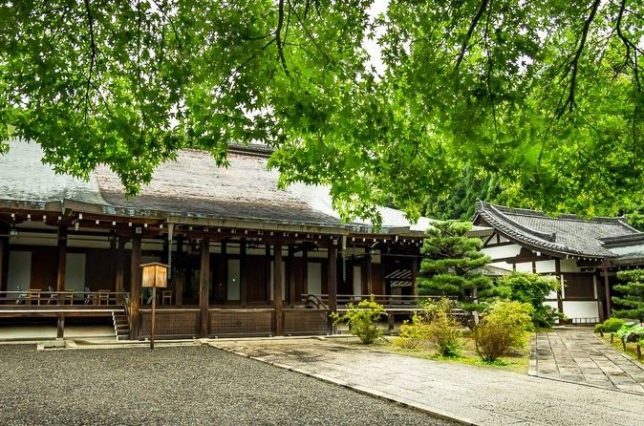
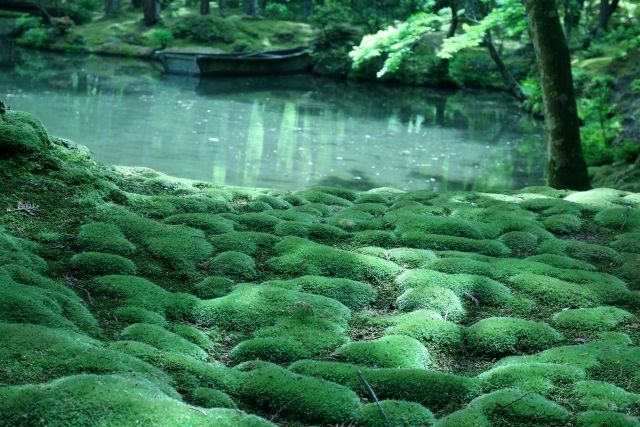
Saiho-ji Temple was originally the site of the Prince Shotoku’s villa. In 1339, the famous Buddhist monk Muso Soseki turned it into a zen temple. The gardens were also re-created by Muso Soseki, who gained great recognition as a calligrapher, poet, and garden designer. He created a lot of gardens during his life time as a part of the zen meditation routine, but Saiho-ji’s garden is obviously his master work, and strongly influenced later Japanese garden design.
The garden is divided into upper and lower sections. The upper section is “karesansui” (枯山水) style, a dry garden with impressive scenery created by rocks, sands, and plants. And the lower section is “chisenkaiushiki” (池泉回遊式), a strolling style garden. Visitors can enjoy the scenary while strolling around the ougon-chi pond, shaped like the kanji character for heart (心). Shonan-tei h湘南亭), a tea room is also in this part of the garden.
Features
One of UNESCO World Heritage Sites create a tranquil atmosphere along with rich green moss carpets.
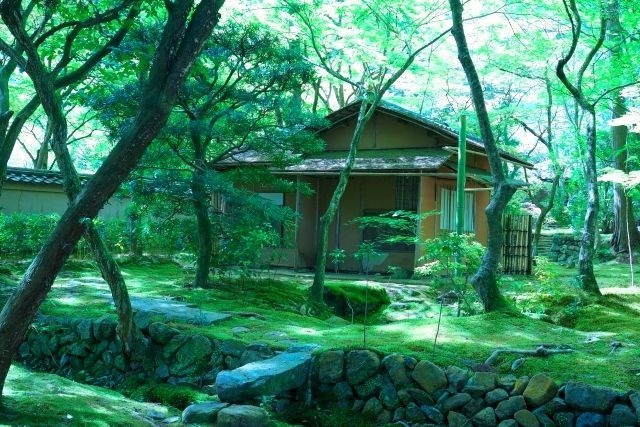
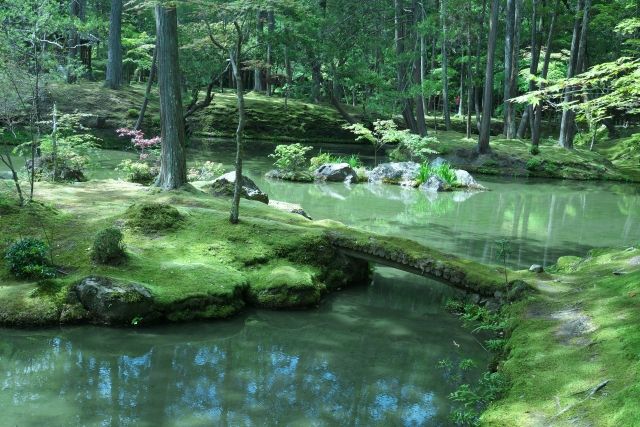
The best times to visit Saiho-ji Temple are during the rainy season (mid-June until mid-July) for the lush green moss. Also the autumn colour season (Nov until early-Dec) is good. When the maple leaves turned into red and orange create impressive contrast with green moss.
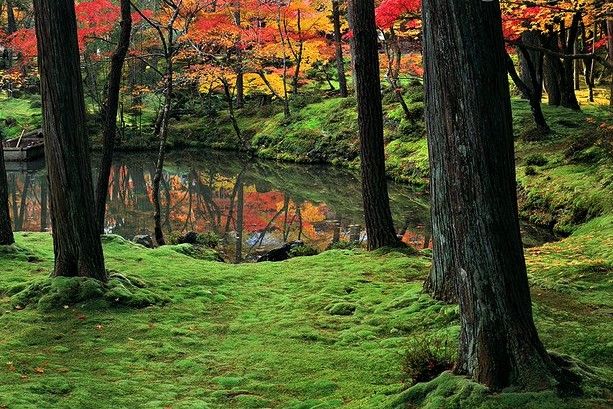
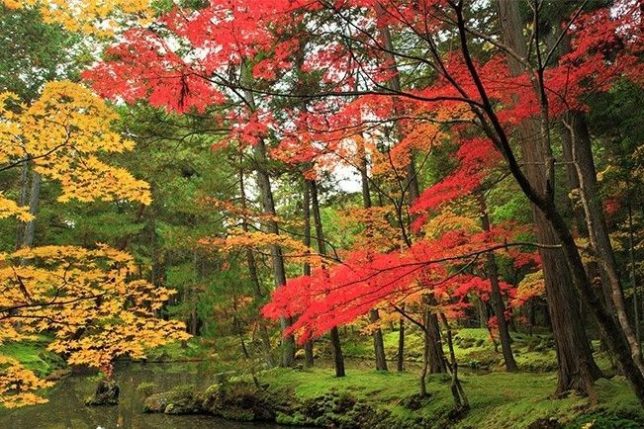
Saiho-ji requires advance reservation.
Many people want to visit the temple to experience this particular beauty. Therefore, restricted admission is given. Entrance to Saiho-ji Temple requires some advance reservation process.
Reservations can be made from one-week to two-months in advance by postal mail only. No telephone, internet or e-mail is available.
This process is a bit complicated, or applying from overseas, there are some services you can find on the web that will handle the reservation process on your behalf for a fee. Just search of the keywords “Saihoji reservation help” , you will find several options.
Applying from inside Japan
If you are in Japan, you can buy a return postcard called an “oufuku hagaki ” at a post office or convenience store and address it as written below.
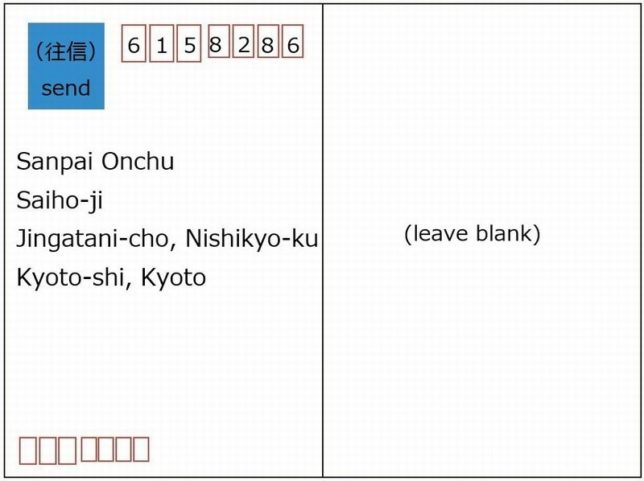

You will need to write your name, the requested dates for your visit (better choose a day in the middle of your stay in Kyoto, in case the requested date is not available), the number of visitors in your group, as well as the name and address of your “group representative” (this can be you).
Please note that your application has to be sent by at least one week before your requested date to visit, preferably several weeks in advance
Your application will be comfirmed via a return postcard. The temple can only send postcards to addresses in Japan.
You will receive a postcard from the temple in Japanese as below, if available. You just bring the postcard to the temple as your ticket on the day.
参拝証
①〇〇様 ②〇名
令和③〇年〇月〇日④午後〇時に
本証持参のうえご参指下さい。
当日、参拝冥加料一名につき
⑤金3,000円をお納めお願いします。
Points
①Name of group representative
②Number of visitors in group
③Date of visit (year/month/day)
※ Year follows the Japanese Imperial calendar
④Time of visit(午前 for A.M, 午後 for P.M)
⑤Admission per person
3000 JPY : Pay on site
Visit Saiho-ji Temple
Every visitors are required to participate in some temple’s religious activities after entering the gate. A monk leads you to the main hall for kito and shakyo (respectively, the chanting and copying of sutra, Buddhist scriptures). At first monks chant then, you have to copy a sutra. You can simply draw the prefilled characters however, the sutra consist of Japanese kanji charactors. It’s also required for each visitors to write a personal prayer at the end of the sutra paper. You can write it in your own language. When everything done, you can enjoy strolling through the incredible moss garden. The entire experience should take about 90 minutes.
Address : 56 Matsuojingatanicho, Nishikyo Ward, Kyoto, 615-8286
Access : 18-minute walk from Matsuo-taisha station on the Hankyu Arashiyama line, or take the Kyoto city bus from the station to Suzumushi-dera stop
Admission : 3000 yen